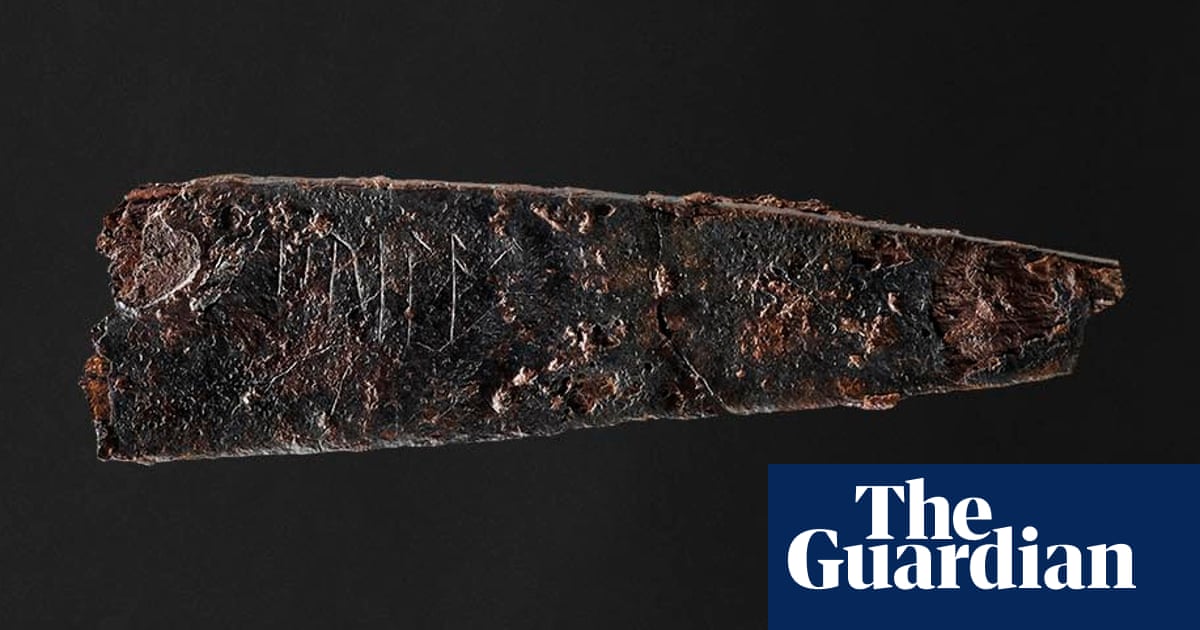Inscription on knife discovered by archaeologist in grave on island of Funen spells hirila, which means ‘little sword’
An engraving on an almost 2,000-year-old knife believed to be the oldest runes ever found in Denmark has been discovered by archaeologists.
The runic inscription – the alphabet of Denmark’s earliest written language – was etched into an 8cm iron knife found in a grave below an urn near the city of Odense on the island of Funen. The five characters, each about 0.5cm tall, followed by three grooves, spell out hirila, which means “little sword” in Old Norse.



This is the best summary I could come up with:
The runic inscription – the alphabet of Denmark’s earliest written language – was etched into an 8cm iron knife found in a grave below an urn near the city of Odense on the island of Funen.
Jakob Bonde, the city’s museum curator and archeologist who made the discovery, said he at first thought it was an ordinary knife, as the runes were not visible, but after it was cleaned by conservators it became clear that it contained a word.
The knife, which will go on display at Museum Odense in Møntergaarden from 2 February, will be shown alongside other artefacts found at the site.
It is believed to be 800 years older than the Jelling stones in Jutland, which include one erected by King Harald Bluetooth in about 965 in memory of his parents.
The stone’s inscription, often referred to as “Denmark’s birth certificate”, describes Harald’s achievements and contains Scandinavia’s oldest image of Christ.
“In the early days of runic history, those able to write constituted a small intellectual elite, and the first traces of such people is to be found on Funen.”
The original article contains 478 words, the summary contains 183 words. Saved 62%. I’m a bot and I’m open source!